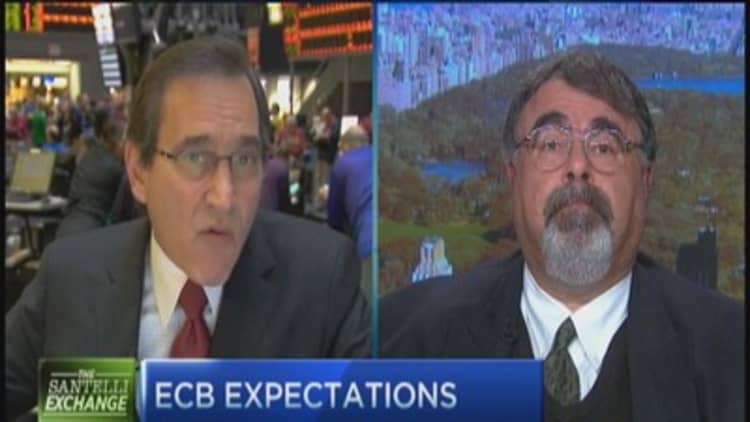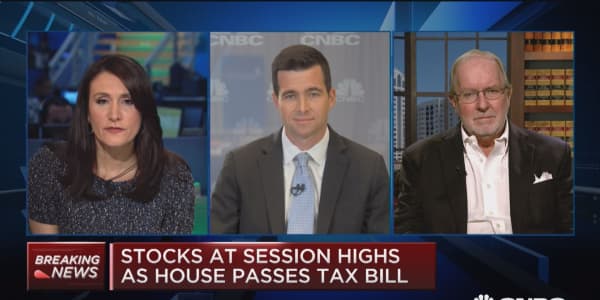Maybe it's no coincidence that consumer sentiment and stock market behavior have yet to show any major reaction to the end of the Federal Reserve's monthly stimulus.
Liz Ann Sonders, chief investment strategist at Charles Schwab, thinks the third leg of the central bank's quantitative easing actually had become detrimental to confidence.
Using crisis-level policies at a time when the economy and market had clearly come out of crisis just didn't seem to make a lot of sense anymore.
The Fed had been buying bonds at a high of $85 billion a month in a program that expanded its balance sheet past the $4.5 trillion mark, and has kept its target funds interest rate near zero for going on six years.

All that while the economy was five years removed from its last recession and the stock market had gained 200 percent from its March 2009 lows.
Read MoreFed's Fisher: QE3 never should have happened
"We're in a world of hurt if we can't sustain momentum at a 50 basis points fed funds rate," Sonders said Wednesday at the Schwab IMPACT conference in Denver. "I have been of the view, and the consensus within Schwab and the view of Chuck himself, (that) although the early round or rounds of QE were absolutely justified—it was the shot of adrenaline to a patient in trauma—the latter rounds are a little more questionable."
She said the third leg of QE displayed "the law of diminishing returns" after the first two rounds helped push the economy and markets out of a malaise sparked, respectively, by the financial crisis and the European debt crisis.
"What's interesting is looking at once the Fed announced it would start tapering, that was when you started to see lending growth pick up and confidence improve," Sonders said. "That tells me you could argue the latter stages of this dented confidence. ... In the latter stages we really reached a point where there was a very significant decline in the benefits of expanding the balance sheet."
Read MoreMarkets are still addicted to money printing
The market has had its moments regarding the end of QE—the "taper tantrum" it threw in May 2013 after former Chairman Ben Bernanke tipped his hand about the end of the program; a disruption in March when current Chair Janet Yellen made remarks interpreted as a tip toward a quicker hike in interest rates than the market had anticipated; and mid-October's turbulence that saw the have a brush with correction territory.

However, investors weathered each storm, pushing the market back to record heights.
"The next stage is, can the Fed unwind this balance sheet in a manner that is not hugely disruptive to the markets?" Sonders said.
Read MoreR.I.P. QE: Fed shuts off the printing presses
Overall, she sees a positive climate, with lower energy prices and increased capital expenditures complementing steady economic growth and reasonable valuations.
"We're in the next phase of the economic recovery, which will be more investment-driven through capital spending," Sonders said. "The dollar is in a new sustained bull market that has as its underpinning factors that are also supportive of the bull market. We're in an environment now that is very similar to the mid-1990s. The hope, of course, is that it doesn't end like the late-1990s—in a speculative blowoff top."





